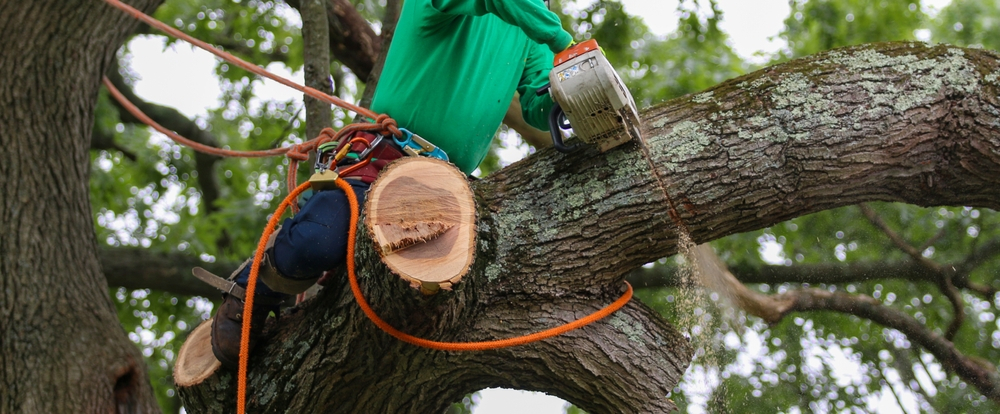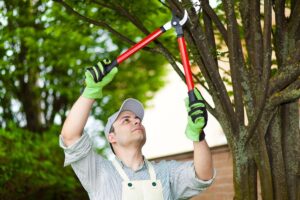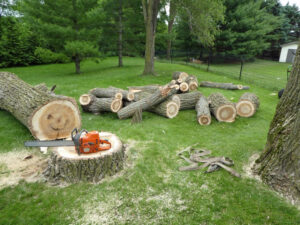Why Tree Trimming is Essential for the Health of Your Trees
Trees are not just beautiful additions to our landscapes; they are vital components of our ecosystem, providing us with oxygen, shade, and beauty. However, like any living organism, trees require care and maintenance to thrive. One of the most crucial aspects of tree care is trimming, which plays a significant role in ensuring the health and longevity of trees. In this comprehensive guide, we will delve into the importance of tree trimming, the signs that indicate your trees need trimming, the benefits of regular trimming, the best time to trim your trees, and why consulting a professional arborist is essential for proper tree maintenance.
The Importance of Tree Trimming for Tree Health
Trees, like any living organism, are susceptible to disease, pests, and environmental stressors. Tree trimming is a proactive measure that helps mitigate these risks and promotes overall tree health. By removing dead, diseased, or damaged branches, trimming prevents the spread of decay and disease throughout the tree. These compromised branches can serve as entry points for pests and pathogens, which can quickly spread and cause extensive damage if left unchecked.
Moreover, regular trimming enhances the structural integrity of the tree by eliminating weak or poorly attached branches that are prone to breakage. This reduces the risk of falling branches, which can pose a threat to property and safety, especially during storms or high winds. By maintaining a strong and stable structure, trimming prolongs the life of the tree and reduces the likelihood of costly damage.
Furthermore, trimming promotes healthy growth by stimulating new growth and improving air circulation and sunlight penetration throughout the canopy. Adequate airflow reduces the risk of fungal diseases, while sunlight is essential for photosynthesis, the process by which trees produce energy. By optimizing these environmental factors, trimming fosters overall tree health and vigor.

Signs that Your Trees Need Trimming for Health Reasons
Identifying when your trees need trimming is crucial for maintaining their health and preventing potential hazards. Several signs indicate that trimming is necessary:
- Dead or decaying branches: Dead or decaying branches are not only unsightly but also pose a significant risk to the tree’s health. These branches can attract pests and pathogens, leading to further decay and disease if not removed promptly.
- Overcrowding of branches: When branches are too close together, they compete for resources such as sunlight, water, and nutrients. This can inhibit the tree’s growth and lead to weak, spindly branches that are more susceptible to breakage.
- Crossing or rubbing branches: When branches rub against each other, they create wounds that can serve as entry points for pests and pathogens. Over time, these wounds can lead to decay and structural weakness.
- Signs of pest or disease infestation: Yellowing leaves, abnormal growths, or unusual activity around the tree may indicate an infestation. Trimming can help remove infested branches and prevent the spread of pests and diseases to other parts of the tree.
- Damaged or weak branches: Branches that are cracked, split, or otherwise damaged are prone to breakage, especially during storms or high winds. Trimming can remove these weak branches and reduce the risk of accidents and property damage.
Ignoring these signs can lead to further problems, including the spread of disease, reduced structural integrity, and even the eventual demise of the tree. Therefore, it’s essential to be proactive and address these issues promptly through regular trimming.
The Benefits of Regular Tree Trimming
Regular tree trimming offers numerous benefits beyond just maintaining tree health:
- Improved tree health and growth: By removing dead or diseased branches, trimming stimulates new growth and fosters overall tree vigor. This promotes a lush, healthy canopy and enhances the tree’s ability to withstand environmental stressors.
- Enhanced appearance and curb appeal: A well-trimmed tree adds beauty and elegance to any landscape, enhancing the overall aesthetic appeal of your property. Trimmed trees look more manicured and well-maintained, improving curb appeal and potentially increasing property value.
- Reduced risk of accidents and property damage: Removing hazardous branches reduces the likelihood of branches falling and causing harm to people or property. This is especially important for trees located near buildings, roads, or other structures where falling branches could pose a risk to safety.
- Prevention of pest and disease infestation: Proactive trimming helps identify and address potential pest or disease issues before they become widespread. By removing infested or diseased branches, trimming can prevent the spread of pests and diseases to other parts of the tree or neighboring trees.
- Cost and time savings: Investing in regular trimming can save you money in the long run by avoiding costly repairs or the need for extensive tree removal. By addressing issues early and maintaining the health of your trees, you can avoid expensive emergencies and ensure the longevity of your landscape.
By prioritizing regular tree trimming, you not only ensure the health and safety of your trees but also save yourself from potential headaches and expenses down the line. It’s a proactive investment in the long-term health and beauty of your landscape.

When is the Best Time to Trim Your Trees?
Timing is crucial when it comes to tree trimming, as it can impact the tree’s health and growth. The ideal time to trim trees varies depending on the species, but in general, the dormant season—typically late winter to early spring—is preferred. During this time, trees are less susceptible to stress and disease, making it an optimal time for pruning. Additionally, trimming during the dormant season promotes vigorous new growth in the spring, leading to healthier, more robust trees.
However, it’s essential to consult with a professional arborist to determine the best timing for your specific trees. They can assess the tree’s health, growth patterns, and environmental factors to create a customized trimming plan that maximizes benefits while minimizing risks. For example, some species may benefit from summer pruning to shape growth or remove water sprouts, while others may require pruning in the fall to remove dead or diseased wood.
Furthermore, certain factors may necessitate emergency or corrective pruning outside of the usual trimming schedule. For example, storm damage, pest infestations, or disease outbreaks may require immediate attention to prevent further damage or spread. In these cases, it’s essential to contact a professional arborist as soon as possible to assess the situation and take appropriate action.
Conclusion
In conclusion, tree trimming is an essential aspect of tree care that directly impacts the health, safety, and beauty of your landscape. By removing dead, diseased, or damaged branches, trimming promotes healthy growth, enhances structural integrity, and reduces the risk of accidents. Paying attention to signs that your trees need trimming and scheduling regular maintenance can prevent costly problems and ensure the health and safety of your trees for years to come. So, don’t wait until it’s too late—invest in the health of your trees today! Remember, consulting a professional arborist is crucial for proper tree maintenance and ensuring the longevity of your landscape. With proper care and attention, your trees will thrive and continue to beautify your surroundings for generations to come.
Tree Trimming Richmond
(804) 533-3943
https://treetrimmingrichmond.com/



